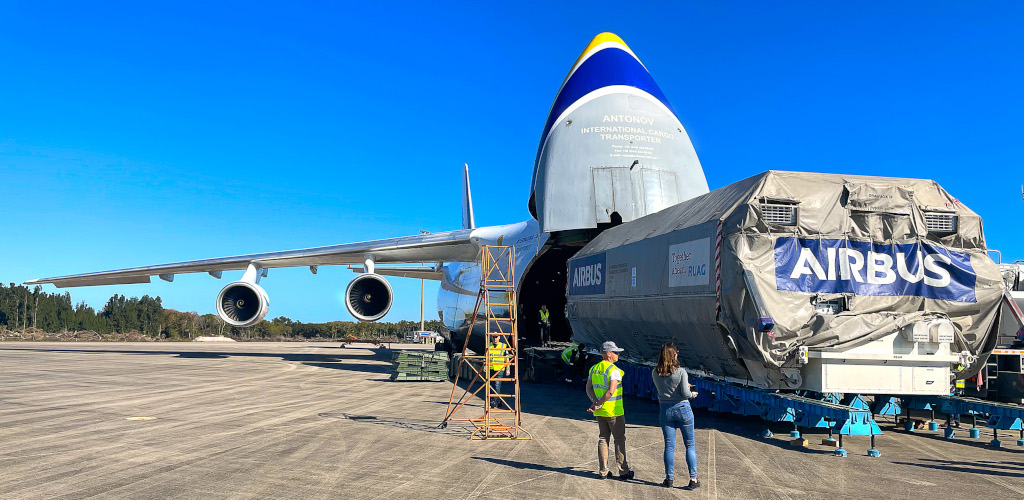Mar 18 | 2022
Aircraft Diverted To Support Humanitarian Release Efforts

The conflict in Ukraine is tightening air freight capacity, with airspace restrictions and a reduced pool of aircraft curtailing options for shippers.
“Service cancellations and an increase in transit times are seeing available services at a maximum capacity as demand for space increases,” Germany-based forwarder deugro said in a market update.
Companies originating from Russia are barred from flying in European and North American airspace, while Ukraine-based carriers have suffered grounded fleets and, in some cases, loss of assets.
Ukrainian project cargo specialist Antonov Airlines’ AN-225 “Mriya”, the world’s largest cargo aircraft, was destroyed during fighting between Russian and Ukrainian troops for control of Gostomel Airport outside capital city Kyiv. The plane, the only one of its kind ever built, had been undergoing maintenance at the time of the Russian attack.
The whereabouts of the remainder of Antonov’s fleet including its seven AN-124s has not been confirmed by the company.
According to breakbulk specialist Dachser Air and Sea Logistics, global air freight capacity has shrunk by about 20 percent since the outbreak of hostilities.
The use of cargo transport aircraft to deliver relief supplies to victims of the conflict is further squeezing capacities.
The number of refugees fleeing to escape the violence in Ukraine has climbed to about three million, prompting a steep rise in emergency airlifts organized by international aid organizations.
“Short term aircraft availability is becoming scarcer as demand is rising for urgent humanitarian charters in Europe,” deugro said.
The use of commercial freight aircraft to deliver humanitarian and emergency medical provisions is commonplace.
Antonov recently told Breakbulk it had been “heavily involved” during the pandemic in the transport of medical supplies such as PPE equipment from China to Europe and the US.
“The cargo industry is going to have to move into yet another gear to help deal with increased demand and the smaller pool of aircraft now available,” said Ben Dinsdale, director of humanitarian services at aircraft charter company Air Charter Service, which began chartering flights with relief cargo for various aid organizations at the beginning of March.
“In a market already struggling for available aircraft due to the well-publicized supply chain issues gripping the world, we have mobilized our cargo team and emergency response procedures to ensure we can find solutions for all relief flights heading to the region.”
deugro meanwhile said the conflict was pushing up transit costs for shippers, who are being forced to re-route flights from Europe to Asia amid Russian-imposed airspace restrictions.
Rising jet fuel prices are also increasing freight rates.
Sanctions cutting Russian oil exports, which account for about 8 percent of global supply, are putting more pressure on crude prices, which touched a near 14-year high of US$130 per barrel in the first week of March.
deugro also warned that some carriers could start imposing so-called War Risk Surcharges for cargo transported to and from Asia.
“The overall market rates remain high and are spot rate driven making forecasting extremely difficult,” deugro said in its report.
“Shippers on long term contracts will be affected by delays and cancelations, however the price and capacity commitments will still be locked in with the carriers. Negations for new long-term contracts are becoming increasingly difficult.”
PHOTO: Antonov loading Turkish satellite for SpaceX delivery CREDIT: Antonov Airlines
